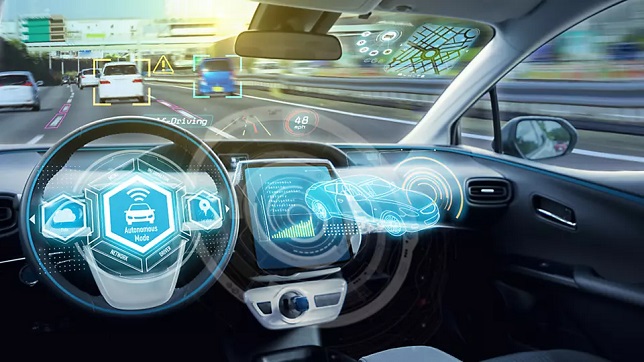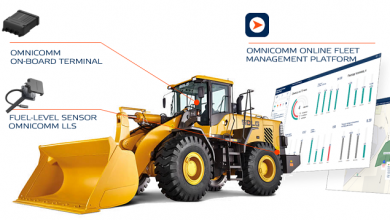Connected Cars – Testing V2X Systems

V2X communication technology is an important enabler for advanced driver assistance systems (ADAS), a system developed to facilitate autonomous driving and smart cities with intelligent transportation systems (ITS). Asia Pacific continues to lead the global connected car market, for cars to communicate with each other local govt plays an important role to mandate and implement V2X technology.
As assisted driving technology and connected cars are becoming a reality, there will be significant growth in the importance of V2X communication in vehicles. New vehicles are becoming more connected – with each other, internet and with surrounding infrastructure. New systems are being developed and integrated at a rapid pace, as automotive brands compete to claim an edge by harnessing the potential to improve the driver and passenger experience – in terms of safety, information, convenience and entertainment. The arrival of new systems and protocols requires new testing approaches and will increase demands upon automotive research and development in terms of network expertise.
To ensure absolute reliability from automotive systems, testing is crucial to meet the challenging requirements of conformance, performance, safety and reliability. In order to achieve truly flexible and robust V2X testing and dynamic behaviour of V2X entities, in a virtual and field environment that accurately re-creates the key conditions, T&M companies are playing a vital role in accelerating adoption of V2X technology, delivering rigorous and cost-effective tests, while empowering automotive companies to shape the future of transportation.
Testing V2X systems
Testing V2X communications is becoming a critical part of vehicle development and presents a unique combination of challenges. As with any automotive system, it is essential to test and ensure, that every connected vehicle is safe, performs accurately and responds to real-world situations and challenges in a way the user would expect. Testing to evaluate the systems should include metrics for precision, robustness, repeatability, safety and much more.
- Testing for conformance and interoperability:
Connected vehicles need to interact with roadside infrastructure – and just as importantly, each other. That means, all manufacturers will need to conform to a common set of agreed standards. As with all new automotive technology, consumers’ trust will be essential to adoption – and any failures, particularly those affecting safety, will reflect directly upon the brand involved. But in many respects, interoperability is a new challenge for the automotive sector. OEMs and their supply chains have an excellent track record in setting, meeting and policing their own standards – but direct interoperability, based upon shared protocols, will be something many automotive test engineers are facing for the first time. Manufacturers in the sector therefore, need to define test cases that will enable them to confirm any new V2X systems conform fully to the relevant protocols for each territory.
- Testing for functionality and performance:
Conformance with agreed protocols is only a first step. For V2X, this means it needs to send, receive and interpret signals correctly, interact well with infrastructure and other vehicles and make sense of all this information to react appropriately in every scenario. A framework for tests would include:
- Evaluating response to real-world challenges; such as, radio channel impairments, obstacles to reception, and both deliberate and accidental cyber-attacks.
- Including other on-board units (OBUs) and roadside units (RSUs) to scale up the complexity of the environment and see how systems cope with a changing variety of V2X signals at once.
- Finding failure points by pushing the system beyond its limits, to evaluate its tolerances and discover how it behaves.
- Capturing how the device under test (DUT) behaves, with clear reporting to enable performance comparisons and confirm whether it responded as expected
- Testing at component and system level – including both software-in-the-loop (SiL) and hardware-in-the-loop (HiL).
- Testing V2X security:
Alongside any tests for standards conformance or system performance and functionality, it is essential that the V2X test regime confirms security in the face of a growing number of increasingly realistic threats: V2X communications give hackers a direct route into a vehicle’s systems – the technology and knowhow to abuse that opportunity. To mitigate the risk, V2X systems need to be robust, reliable, and capable of recognizing when they are under attack – and these capabilities need to be tested. It is essential that V2X test equipment includes the flexibility to recreate current and future threats as they emerge. A configurable, GUI-based emulator gives the required control.
Testing V2X
Distributed Short Range Communication (DSRC) defined in IEEE802.11p has been around for years as the main radio technology for V2X, supporting Vehicle-to-Vehicle (V2V) as well as Infrastructure-to-Vehicle (I2V) communication. Recently, we’ve seen growing support for usage of cellular radio technology for the same purpose.
Now with Cellular V2X (C-V2X) specifications published by 3GPP the need for testing C-V2X to ensure interoperability and validate performance is becoming urgent. C-V2X defines Proximity Services (ProSe) and the PC5 interface for device-to-device communication, to support Vehicle-to-Vehicle (V2V) and Vehicle-to-Infrastructure (V2I) applications.
Testing V2X in lab and field – best of both
Although live, drive testing in the field remains a key part of developing any automotive system, laboratory-based tests also have a critical role to play. The two approaches have complementary strengths. Both laboratory and field testing have important roles to play in the future of V2X development and the industry should make the best possible use of both in order to drive innovation in a safe, robust and cost-effective way. However, as the technologies involved become more sophisticated and numerous, the gap between the two approaches is growing. It is becoming increasingly difficult to reflect all the internal and external influences upon the connected car in a laboratory environment and harness the respective strengths of both. There is a pressing need for smart integration of lab test equipment, with a higher standard of simulation, to give a more precise, accurate and controllable lab-based version of live test conditions.
The way forward
Increasing integration of V2X, ADAS and automated systems present automotive companies with a number of challenges, most notably, interoperability and cybersecurity. To find a reliable, robust and cost-effective way to ensure that the vehicle and all its components deliver the best & safest experience for the driver – remains the same as it has always been. Solutions for testing the next generation of connected vehicles should be built upon proven methods, technologies and techniques that deliver robust results, while enabling rapid innovation.
Author:
Ravi Patil
Solution Head – APAC South
Ethernet and Automotive
Spirent Communications
Ravi Patil is Solution Head – APAC South, Ethernet and Automotive, Spirent Communications, engaged in designing and testing automotive ethernet ECU conformance and interoperability.
Published in Telematics Wire


